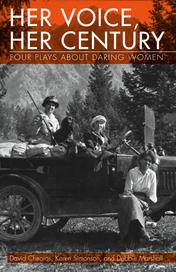General


THE WORST STORM IN SUNSHINE COAST HISTORY
PIONEERS AT THE EARLY SETTLEMENTS along the coast have published stories or have told younger generations about the famous great gale of Saturday, January 29, 1921, when heavy timber along the coast went down before a southeast wind, creating a shambles in such places as Lang Bay, Egmont and Sechelt.
Lang Bay lies on the east side of Malaspina Strait, south of Powell River. In Great Waters, a book written by the Reverend George Pringle, includes an account of the storm. He and five others from a shinglebolt camp were walking the mile through the woods to Smith's store at Lang Bay settlement when the 1921 gale "tore down upon us in howling fury. There was no place for shelter from the great branches and limbs that whizzed past us in the darkness, and the giant trees that fell crashing down in all directions around us. The noise of the storm was so great that to make ourselves heard we had to shout into one another's ears."
The marine missionary wrote that he spent the most terrifying hour of his life on that walk, but upon arriving at a house at Smith's clearing he decided to service anvway: "We were nicely started when the window blew in! I caught it on my back, but the lamp was extinguished and the table blown over. It took fifteen minutes to get the window nailed back and everything in order again. I got along to the sermon and was somewhere in 'secondly' when a wild blast commenced to tear the paper off the wall opposite me, against which the people were sitting. It was building paper loosely tacked on in strips from ceiling to floor. Another gust and down it all came, completely covering up my congregation. After they had crawled out it took half an hour before we got that paper tacked up again. Then we closed with the hymn 'For Those in Peril on the Sea.' Millions of feet of standing timber were blown down that night at Lang Bay." Mr. and Mrs. William Griffith and their youngsters settled in August 1920 at a bay east of Egmont Point, which is northeast of Skookumchuk Narrows. They lived in a log cabin which had been built by a relative in 1914. When Mrs. Griffith proposed putting the children to bed on that Saturday evening in January, 1921, Mr. Griffith suggested a delay because a southeast wind was refreshing. Gladys McNutt recorded their story as told to her by Bill, a son of the family. "The Griffiths wrapped up the children and took them out to a bare rocky islet within the bay and spread canvas over them as protection from the flying twigs and needles." Early Sunday morning a few of the men who lived in the Egmont area rowed over to check on the Griffith household. "They breathed a sigh of relief to see smoke coming from the chimney but a huge limb was through the roof immediately above the spot where Mr. Griffith usually sat. They all got busy and felled the maples and alders about the place. Most of the standing timber in the draw had come down."
Florence E. Montgomery and Alice French spoke to me of the gale as it had affected them half a century before. Mrs. Montgomery was at that time Florence Cliff, the first teacher at the original West Sechelt school. She boarded for a time with Katie Deal and her husband Fred near the Trail Bay beach.
On the Saturday afternoon of the big storm Florence took a bath and dressed in her best for a dance at the Selma Park Pavilion' She was all ready when Mr. Deal arrived home. He told the ladies to put out the lamps and douse the fire to avoid trouble should a tree fall on the house. Then he shepherded his wife, Florence, as well as a neighbour, Mrs. Nickson and her children Rena and Harold, to take shelter on the beach in the lee of a large scow stranded there two or three years earlier.
About one o'clock Sunday morning the wind had abated sufficiently that Fred Deal felt it safe for his charges to return home. A tree had fallen near the Deal house, but both residences in Nickson's Bay were safe. When daylight came they walked up Norwest Bay Road to West Sechelt school and counted twenty-four trees down en route.
Alice French came to Sechelt in 1919 as the English war bride of Frank French. She was a friend of Thomas John Cook who, as resident magistrate, knew everybody for miles about and organized his neighbours to go check on the more isolated homesteads on the day after the storm. He assigned Alice to visit Mr. and Mrs. McIntyre in West Sechelt. She found them flourishing and their home intact, but their outdoor privy had vanished completely.
During the next summer Alice attended a tea party in the McIntyre's garden. She happened to look up into a tree shading her chair and to her amusement saw the can from the lost outhouse perched high on a limb.
It is said that the giant trees and snags which fell before the southeaster usually lay pointing to the northwest, sometimes piled two or three deep. Over the years they provided firewood for the homesteaders. What a vast amount of time and energy it must have cost to get the trunks sawn through before power saws were in use, to clear the primitive roads and to restore downed telegraph wires. Electric lighting did not then exist except for households using private systems. The Sechelt school in 1921 had only candles and the Sechelt store used hanging gas lamps, which gave a nice white light.
SKELETON ISLAND
THE ARRIVAL OF THE WHITE RACE in British Columbia was detrimental to the welfare of the native people; during late 1862 and 1863 smallpox ran rampant among the BC Indians. This curse almost turned the coast into a vast graveyard. The Catholic missionary Father Fouquet is reported to have vaccinated an estimated 8,000 people while Fathers Chirouse and Durieu together performed the same service for as many more Indians in various regions of the province.
Today the Sechelt Indians are aware of massive numbers of bones to be found in the area of their homes, because at the time of the plagues there were too few survivors to give attention to the bodies of those who suddenly died. Clarence Joe recalled that his father, Basil Joe, once Sechelt occured in 1886. During sewage excavation work in 1964 the men doing the digging found everywhere the skeletons of both adults and children.
At the time of the arrival of the Europeans, the Sechelt Nation was scattered along the coast from Stillwater to Howe Sound. They sometimes buried their dead in boxes placed in trees on Poise Island, which until 1945 was known locally as "Skeleton Island" "Dead Man's Island" or "Cook's Island." (In that year the Canadian Hydrographic Service submitted the new name "Poise" and regrettably this became official.) Across the isthmus from this bay was the settlement of what was then called Chatelech. In the past invading tribes from the north had easy access to Chatelech, so the residents were slaughtered by their enemies as well as by disease. Stories have been told of Haida warriors taking youngsters from Chatelech as slaves. Clarence Joe pointed out, however, that the Haida were not responsible for wiping out Chatelech, and that the last raid upon the Sechelt Nation was made at a village on the mainland shore of the Skookum Chuk by the Kwakiutl. The people from the Jervis Inlet then came down their arm of the sea to attack the Nimpkish Kwakiutl in retaliation.
former chief Alfie August once theorized that some of the bones might be those of Haida Indians who died during tribal fighting. Chief August also recalled that when he was digging out a basement some years ago he found and carefully removed the skeletons of a man, woman and small child. All were in a sitting position. The chiefs mother-in-law, Mrs. Paul, explained to him that in earlier times a body was put in a rough wooden box and buried with the dead in a sitting position.
CONCLUSION
IN THE CENTURY since settlers like Thomas John Cook and Bert Whitaker first arrived at Sechelt the community has taken root. A steady flow of new residents have expanded Sechelt's borders and population over the years, and have combined with the descendents of some of the original settlers. Together they have established a community that has proven itself resilient enough to survive without those single interests, such as the Whitaker holdings or the Union Steamship Company, that played such a large part in establishing it in the first place. The fact that Sechelt is the seat of political institutions like the SCRD, the site of social institutions such as St. Mary's Hospital, and the site of major commercial projects such as the natural gas pipeline to Vancouver Island seems to indicate that the community's location makes it a natural hub of activity on the Sunshine Coast. But while the village is strong enough to look forward to the future, it must also take care to preserve the memories of the past which shaped it.
Though Sechelt is a small community, its history is not irrelevant, for it reflects the development of the province. The community's settlement by sea mirrors the settlement of numerous communities along the northwest coast. And whether reflected by the early loggers above Selma Park or the tourists at the Union resorts, the economic development of Sechelt is a microcosm of how British Columbia has developed economically. The mixing of peoples of different race and backgrounds - Japanese such as the Konishis; the Swedish Carlsons; the French missionaries and Pete Le Vesque; the American Abe Mason; the Scottish Youngsons and Thomas John Cook of England - is reflective of the cultural makeup of the province and the country. And it can be noted that while people like Bert Whitaker and T.J. Cook demonstrated much foresight in choosing to settle the busy isthmus between Trail Bay and Porpoise Bay, it was the Indian people of Sechelt - currently the only self-governing Indian band in British Columbia - who were the true pioneers in that regard, their tenure in the area being measured not in hundreds but in thousands of years.
So there are things to be learned from how this community developed. But insight can only be gained if an accurate record is kept, based not on myth or rumour but on fact. Hopefully, as Sechelt continues to develop, there will be those willing, to take the time to chronicle its development, and those ready to appreciate that by preserving important connections to its past the community is nourishing its own roots.







